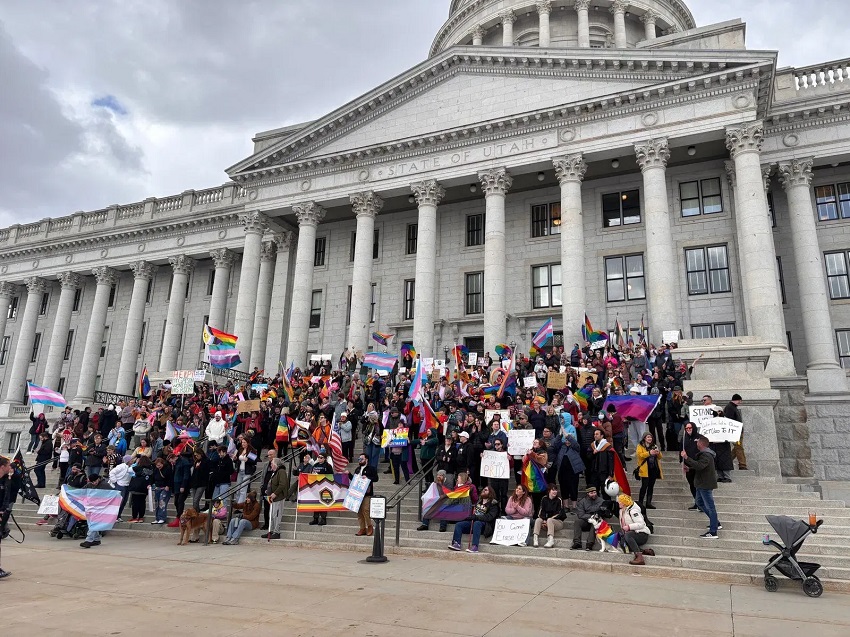SALT LAKE CITY, UTAH — In a bold response to a new state law banning the display of political flags on government property, Salt Lake City has officially adopted three new municipal flags to represent values the city says are core to its identity.
The law, passed during Utah’s 2025 legislative session, prohibits the prominent display of flags deemed political—including LGBTQ+ Pride, transgender visibility, and Juneteenth flags—on state-owned or government-operated property, including public schools. It goes into effect Wednesday.
But Salt Lake City leaders were prepared. At Tuesday night’s city council meeting, Mayor Erin Mendenhall unveiled three newly designated official city flags, each symbolizing a historically underrepresented community. The flags honor LGBTQ+ Pride, Juneteenth, and transgender visibility—and all incorporate the sego lily, Utah’s state flower and a symbol already featured on the city’s primary flag.
“In lieu of this defining legislation, I have determined that when it comes to representing our city’s values, I know we can do more than fly a single flag. Three more, to be precise,” Mendenhall said during the presentation.
By formalizing the designs as official symbols of Salt Lake City, the flags are now legally protected under the same exemption in the state law that allows municipal flags to be displayed on government property.
The Salt Lake City Council unanimously approved the adoption of the flags, framing the move as both a legal workaround and a clear statement of the city’s commitment to inclusion and equity.
“These flags are not political statements—they are reflections of who we are,” said Council Chair Alejandro Puy. “They represent residents of our city who deserve to see themselves in our public spaces.”
The measure has received both praise and criticism. Supporters say the action is a creative affirmation of community values in the face of state-level suppression. Opponents argue that using city resources to promote identity-based symbols continues to politicize public spaces.
The flags are expected to be displayed at City Hall and other city buildings beginning this week.
As municipalities across Utah await guidance on how to comply with the new state law, Salt Lake City’s approach could serve as a model—or a flashpoint—for other local governments navigating the tension between state mandates and local values.

